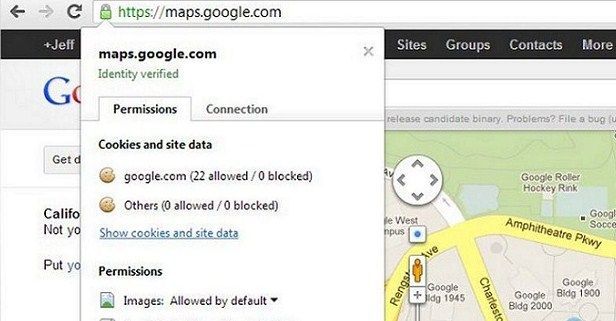Google has launched version 23 of its famous Chrome browser, whose main new feature is the addition of a “Do Not Track” option. Internet Explorer and Mozilla Firefox a while ago had already included this feature, which allows users to decide whether or not their data can be tracked. Now, it is Chrome that has included the “Do Not Track” button.

I suppose some have wondered why after searching a specific topic or a certain product on the Internet that advertising or articles appear that are related to those same products that you are searching for. As many of you know, this is because browsers track user browsing and cookies, and they use that information to send you personalized advertising. Legal? Ethic? Violates our privacy? Whatever your opinion on the matter, this happens.
Because of this, various browsers have been incorporating for a while now a feature that makes it so your browsing data can’t be tracked, which is attractive for the browser user. In addition to this, with the update to version 23 of Chrome, a menu has been added that gives you additional options, such as blocking access to your computer’s webcam, location information, and other exposing data.
Other modifications that have been made are the inclusion of graphics acceleration for video hardware, which will help save battery consumption, and an API that offers some new tools for developers for creating video and audio apps.

The addition of the Do Not Track feature, or DNT, is part of an important initiative started by Barack Obama’s administration, the reelected president, which aims to establish a regulation on Internet user data privacy. This initiative is called the Privacy Bill of Rights. In regards to this, what has been achieved up until now is that many of the big Internet companies (AOL, Microsoft, and Yahoo!) offer their users the possibility to opt out of data tracking on their respective browsers.
This agreement that big Internet companies have made doesn’t mean that they can’t collect user data for other purposes, such as carrying out market studies, product development, and others, but at least it is an important step in the right direction. However, those who aren’t happy at all with this decision are the companies that advertise on the Internet and that use this tracking feature on web browsers as part of their marketing strategy.
Google’s position is a bit different than that of Mozilla and Microsoft because, as you may know, almost all the advertising on the Internet is organized and distributed around services such as Google AdWords, Google AdSense, and Page Rank, which the search giant assigns to every website. And of course, being Chrome a Google product, a conflict of interest arises for the Mountain View company, who has had to decide between making available or not a tool for its users that its competitors already offer, even though this could alter the way its advertising system is organized.











